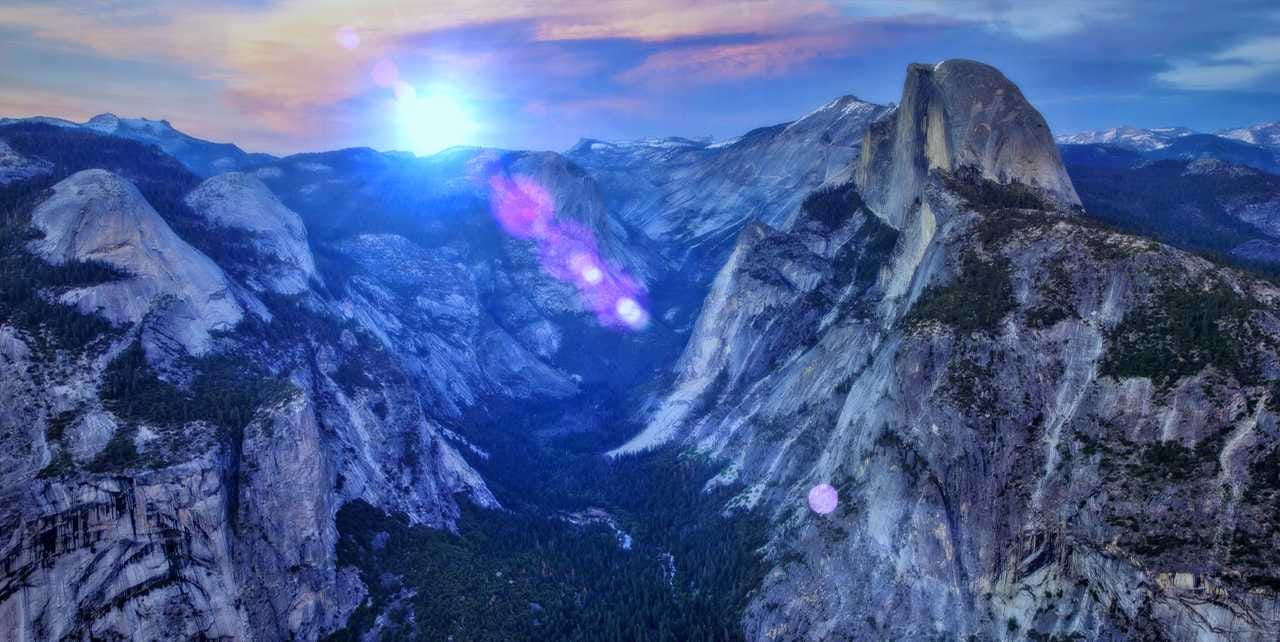A recent article on SFGate.com will inject new paranormal energy into the idea that Yosemite National Park land is cursed, or mysterious…. or something. The article is a mish-mash of beliefs and fiction that draws on many tropes often used to make places seem magical. In this case, that magic is dark.
On my site Spooky Geology, I’ve covered various manifestations of paranormal places including vortex areas (like the Bermuda Triangle), cursed rocks, evil places, and locations said to be home to supernatural forces that make noises, inhabit bottomless holes, or manifest in the rocks themselves. I’ve barely tapped the supply of such tales. Now I have to add Yosemite, I guess. Because hikers say it’s got spooky vibes.
I’m finding myself unimpressed with the legend, though. Whenever a writer invokes a nostalgic “Bermuda Triangle” label, it sounds lazy and contrived, like a poorly written mass-market paperback. The truth of why we feel uneasy about a place is far more complex.
The concept of supernatural geology draws upon the human belief that spirits can specifically inhabit a natural place for a particular reason, thus generating an interesting legend to tell. It becomes dangerous for (mostly white) people to interact with that place where spirits dwell (because the entity is usually evil or angry).
I was not familiar with the details of the Yosemite curse, mainly associated with Tenaya Canyon. As I read this SFGate feature, the same tropes appeared that I have seen in other places hyped by visitors and mystery-promoting writers: a sense of “energy” and “presence”, attribution of disappearances, accidents or deaths as “mysterious”, and a loosely disguised guilt over past treatment of indigenous peoples and their sacred land. The spirits of these people (or their gods) will exact their revenge, we are told, because the invaders were disrespectful, careless, or cruel. Now, we are the invaders. The place is too special and sacred for our footsteps.
I expect my pragmatic views on these concepts will not convince true believers who prefer colorful stories instead. But it’s hard to argue against the reality that most humans in modern circumstances are disconnected from nature and we struggle to comprehend it. Therefore, the awe that is inspired by visiting unique, natural places feels spiritual and “magical”. From personal experience, I’d suggest it can feel overwhelming and scary too, giving a person the unsettling feeling of smallness in such a vast space and vulnerability to natural forces of the land, water, and sky that can destroy us in a hot minute.
I have been meaning to write about the belief of genius loci, the spirit of place in the context of Spooky Geology. I haven’t yet because I’m not sure I fully understand it enough - not until I experience more places and their legendary spirits. But the spirit of place concept seems relevant in these tales of cursed or magical lands. Being in certain landscapes or locations will generate an emotion in us and we feel affected. I’d dare to say we’ve all had this feeling: the place has a personality that we might label as an “energy” or “vibe”. A legend may personify this vibe.
I’ve not been to Yosemite. Even if I do go, it’s unlikely I would tackle Tenaya Canyon because it’s too risky for my hiking level. Many people naturally feel uneasy in areas of bare rocks, uneven ground, and geographical relief. Gods (or goats) should live here, not us. We recognize the danger; that’s part of the vibe. Many people do get injured or killed in hazardous natural areas where a single misplaced step can mean death. An accident, in my worldview, is just an accident. I won’t invoke magical forces to explain a rock slide, avalanche, or the bad step that leads to disaster. Yet, when a place is imbued with genius loci, we can link threads together and back to the legend to make a meaningful picture. It provides an, albeit, wispy, certainty in an uncertain world.
Unfortunately, untrue or exaggerated tales readily accrue to the legend of the place simply on the basis that they should be true. We end up with a mostly fictional narrative about its power. We manufacture another “Bermuda Triangle” - a concocted boundary area - where every happening can be manipulated to fit the framing. We popularize a ridiculous over-hyped conspiracy idea that US officials are hiding the (“supernatural” or unnatural) causes of why people disappear in National Parks. We attribute negative events in our lives to a souvenir object from a sacred place. We explain an environmental anomaly with a fun story instead of exploring the science of it.
The “curse” story attached to Yosemite has mountain-sized holes in it. Just like every other claim where an indigenous person supposedly said some profound words before dying to invoke supernatural magic on the land forever, we can’t confirm their words. It’s a good story, though. That matters. The narrative is mostly invented to assist our overwhelmed brains in making sense of a naturally wondrous condition. That is something humans have always done since we had the ability to transmit information to each other. And it continues today, even though we should know better. The feeling remains more powerful than knowing.





Good stuff, Kiddo.